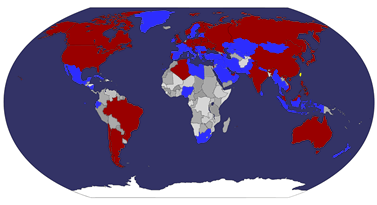Le lancement du courrier de trans-détroit relie le Timbre de distributeur commemoratives







"Staged folk dance is a unique performance genre with a long history. Its themes cover a wide spectrum of subjects ranging from people’s daily activities to myths and legends. While folk dances from different nations display a rich variety of styles because of differences in their historical and cultural backgrounds, they do share some common features. One example is the use of masks to highlight the identity or character of individual dancers. Hongkong Post and Korea Post jointly issue a set of two stamps on "Masks" to showcase the distinct folk dance masks of the two places. This marks the ninth joint stamp issue released by Hongkong Post with other postal administrations.
Mask from Hong Kong, China — Big Head Buddha Mask in Southern Lion Dance
There are different versions of the origin of Big Head Buddha, but most are associated with lions. In the Southern Lion Dance, the first one to appear in the show is the always cheerful Big Head Buddha. A fellow with a palm leaf fan in his hand, the Big Head acts in an amusing way to provoke the lion to perform a series of agile manoeuvres, enhancing the joyous festive mood. The Big Head also plays funny tricks on the lion to induce it to "Cai Qing" (Pick the Greens) or "Po Zhen" (Smash the Battle Line), a symbol of bringing "good luck" and "bumper crops" to all households.
Mask from Republic of Korea — Chwibari Mask of Bongsan Mask Dance Drama
The Bongsan Mask Dance Drama, designated the "Important Intangible Cultural Property No. 17 of Korea", is steeped in realism. Each mask used in a performance reveals the occupation and social status of a character. Through delightfully nimble movements and humorous presentation, the dancers satirise social ills or express the concerns and frustrations of ordinary people. Their performance gives the audience an opportunity to temporarily take their minds off their worries. The most famous folk dance form in Korea, the Bongsan Mask Dance Drama is frequently staged at home and abroad during seasonal festivals and celebrations for good harvests or marvellous feats, as well as ceremonies to welcome visiting dignitaries.
With two opposite face silhouettes as the backdrop, the souvenir sheet presents two masks — a Chinese mask of "Big Head Buddha" on the left and a Korean mask of "Bongsan Mask Dance Drama (Chwibari Mask)" on the right. The theme of the stamp issue is shown trilingually in Chinese, Korean and English. The vibrant colours and contrasting patterns add an intensity to the costumed images on the stamps."-Hong Kong Post





























 taiwan
taiwan  cover or postcard
cover or postcard  FDC
FDC 





























































































